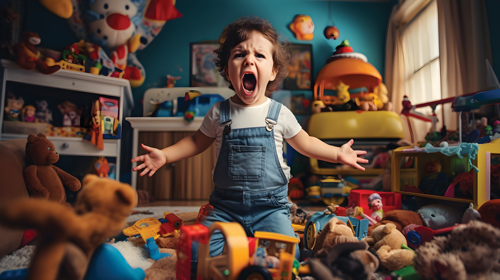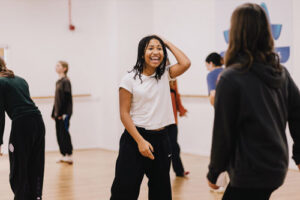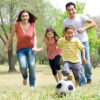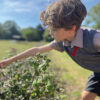
by Sandra Zerr
Head of Marketing, AirHop Group
Trampolining isn’t just fun, it’s good for you too. Exercising regularly not only improves physical health, but mental health as well. And, unlike most other forms of exercise, it doesn’t feel like hard work yet it’s still effective. Bouncing on a trampoline or in a trampoline park can burn up to 1,000 calories per hour! Read on to find out more about some of the surprising benefits that visiting an indoor trampoline park can bring to both your body and mind, whatever your age.
Exercising on a trampoline is three times more effective at burning calories than jogging whilst being lower impact on your joints and limbs. Just ten minutes on a trampoline burns as many calories as half an hour of jogging. The bouncy surface of a trampoline is much kinder on the joints that experience a lot of stress and impact when running, such as your knees and ankles. Stop plodding along the pavement and start bouncing instead, it’s a low impact activity that provides you with really good high impact results!
Research has shown that there is a positive link between physical activity and improved mental health, and what better way to exercise than in a trampoline park!
Exercise can help to reduce stress in the body and release endorphins. These are your body’s feel-good chemicals, so you’ll happily come back for more bouncing! So take a break from your screens and social media and go for a bounce! A couple of hours in a trampoline park will tire you out whilst having fun at the same time, helping to improve your mood and your sleep.
Bouncing is a great way to improve your co-ordination and balance, as well as increasing your spatial awareness. Trampolining requires balance and adjustments of the body to stay in the centre of the trampoline and get a good bounce! The other activities found in trampoline parks – like the wipeout zone, battle beams, assault course, or reaction wall – all challenge your reaction times, physical ability, balance, and strength in different ways.
Every jump uses multiple muscle groups. Bouncing requires the muscles in your glutes, legs, back, and core to be tensed and relaxed repeatedly, giving you a full body workout, and increasing your strength over time. It’s also an aerobic exercise, so your circulation is greatly improved. As you jump, your muscles contract and help the heart push greater quantities of oxygen around the body. So you’ll feel fitter and better in other areas of your life after time spent in a trampoline park!
We’ve found the cure to growing older! Or slowed it down at least – because jumping works in unison with your body’s natural detox system, better known as the lymphatic system, the system responsible for removing dead cells and toxins from the body. Exercising in a trampoline park stimulates lymphatic circulation, promoting a healthy metabolism and helping to burn fat more effectively.
Visiting a trampoline park isn’t just for children, it’s the perfect active day out for the whole family! It’s a great way to spend time together and there are activities for all ages and abilities, not just trampolines! Indoor trampoline parks often have obstacle courses, airbags or foam pits to jump into and practise tricks, battle beams to challenge your friends and family, or reaction games to test your reflexes. Whether you are four or 54, there is an activity for you that will leave you with a big smile on your face.
Students can take a break from the books; swap times tables for trampolines, algebra for airbags, the whiteboard for wipeout, and enjoy a much-needed study break at an indoor trampoline park! They are also the perfect venue for sober socials and even corporate team building events, with a range of different activities to suit everyone and the physical element and fun environment helping to break the ice. Ice breakers without the cringe!
Some of these benefits may have surprised you but they certainly show that the pleasure of going to a trampoline park shouldn’t be restricted to just children; all ages will benefit whilst having a huge amount of fun!
AirHop Adventure & Trampoline Parks run 17 parks throughout the UK providing a fun and active day out for the whole family with sessions for all ages and capabilities. www.airhop.co.uk



 isten when their siblings say no to them entering their room. Emphasising that we also want to respect other people’s boundaries and giving them the language around boundaries is also really helpful. A boundary might not always sound like the word “no”, it can be “That doesn’t work for me”, or “I don’t like the sound of that,” and when you understand that this is someone conveying their boundaries, not only do they have phrases to listen out for but they have the same phrases they can use themselves.
isten when their siblings say no to them entering their room. Emphasising that we also want to respect other people’s boundaries and giving them the language around boundaries is also really helpful. A boundary might not always sound like the word “no”, it can be “That doesn’t work for me”, or “I don’t like the sound of that,” and when you understand that this is someone conveying their boundaries, not only do they have phrases to listen out for but they have the same phrases they can use themselves.


 Empowerment has the potential to liberate young people from these expectations and pressures. Empowerment enables young people to find their voice, their place in this world and feel important and heard. Empowerment is the enemy of insecurity, and through engaging with activities and communities that make young people feel empowered, they grow in a confidence that can be applied to every aspect of their lives.
Empowerment has the potential to liberate young people from these expectations and pressures. Empowerment enables young people to find their voice, their place in this world and feel important and heard. Empowerment is the enemy of insecurity, and through engaging with activities and communities that make young people feel empowered, they grow in a confidence that can be applied to every aspect of their lives.













